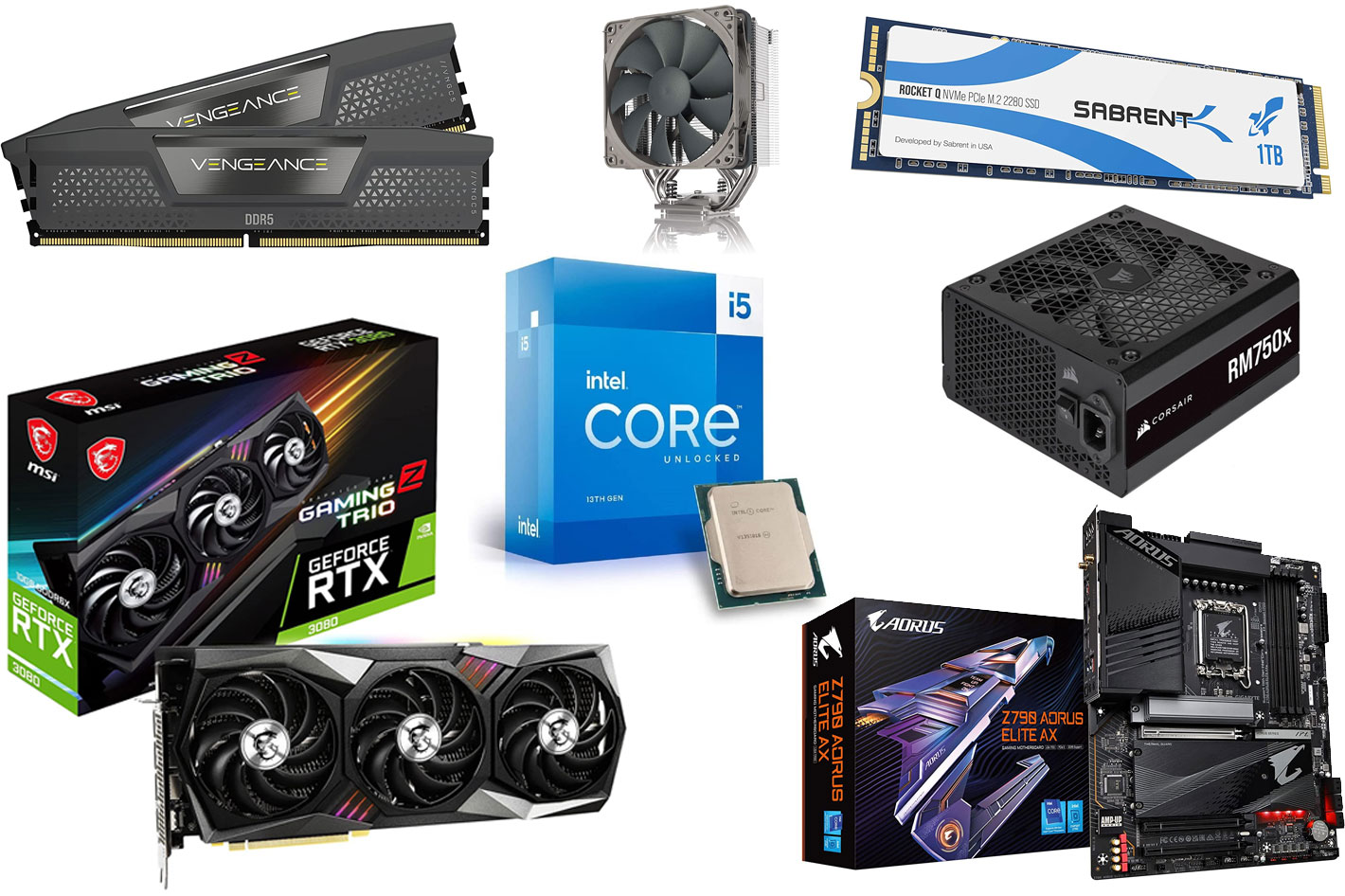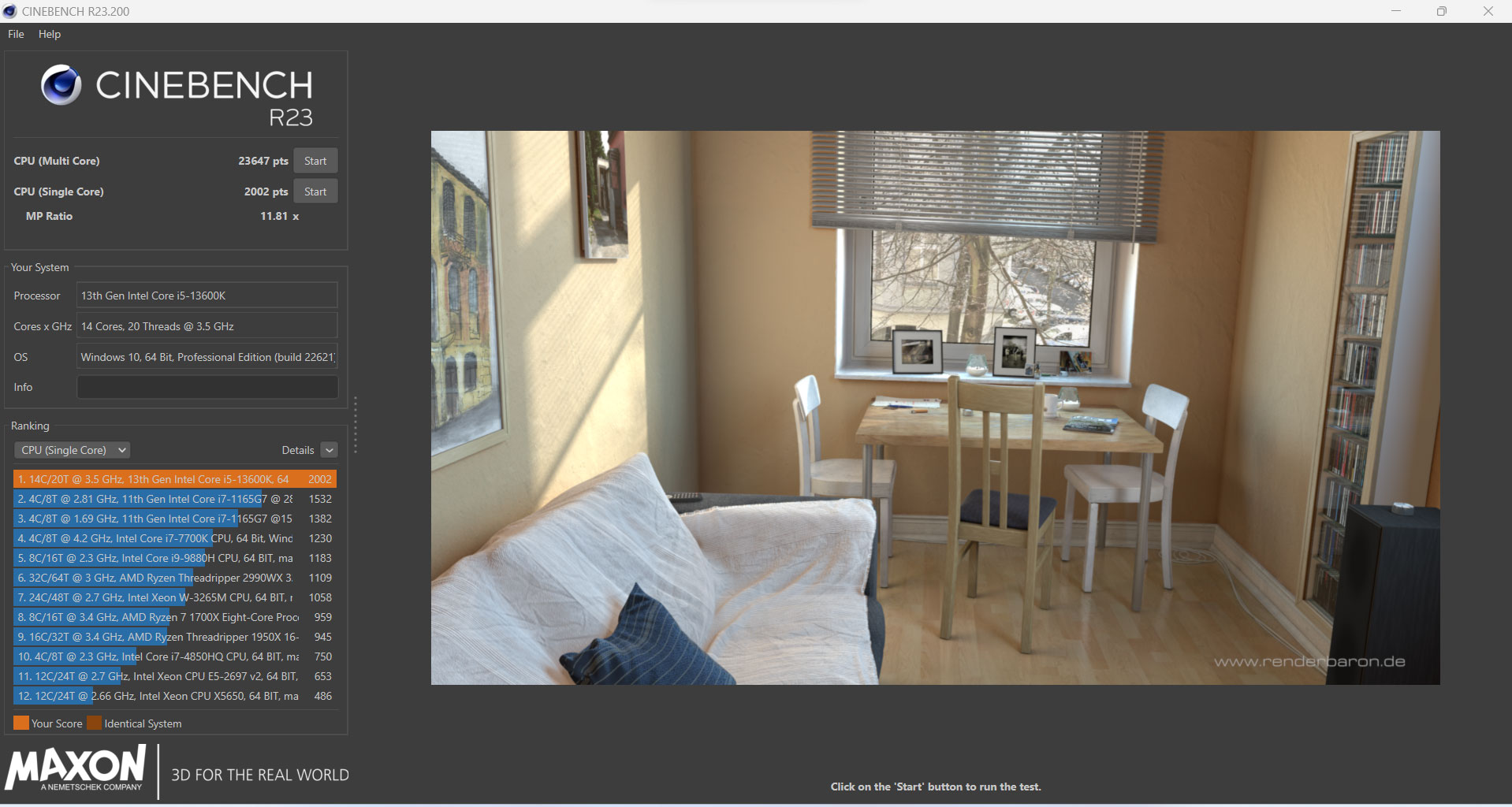
I recently showed here at PVC why you don’t need a powerful computer to run most VR experiences. As I wrote then, the PC I’ve used for quite a while to run some VR software has “an Intel Core i7-4770, the Haswell architecture from 2013 (a decade ago), paired with a GeForce RTX 2070 launched in 2018, with 16GB RAM. I’ve used this configuration with both PCVR and all-in-one VR headsets (non-tethered) to test many of the VR experiences I’ve written about for ProVideo Coalition without problems, so I know it is possible.”
While that’s interesting information for many users, as the whole article clearly demonstrates that the idea you need a powerful computer for VR is wrong and, furthermore, suggests anyone can create a VR-platform using a computer with specifications like the one’s mentioned above, the suggestion is only valid if you’ve an old computer at home that can be brought back to life with some investment of time and money. For those who want to build a new machine for VR… and work, the path is different.
Although it is true that you can build a PC for VR from as low as $500 – Google for it and you’ll find multiple articles promising exactly that – a machine built around an Intel i3-10100F + RX 6500 XT + 8GB DDR4 RAM + 500GB SSD, while able to tackle – some – VR, will not be up to the task if you also want to do some serious gaming…or work. On the other extreme you’ll find some “high-end” solutions, like the “PC Workstation for Virtual Reality” from Puget Systems, for $3766.00… which may be more than you want to spend for your next computer.


If that’s true, welcome to this article, where I share with you a PC build that costs a lot less and competes well with some of the “high-end VR” solutions presented by popular websites for 2023. One example: many point to the HP Omen 30L as one of the best VR machines you can get. One of the configurations available, based on an RTX 3080, costs $2229, while the model with an RTX 3090 costs $2999. The CPU for the first configuration is the Intel Core i9-10850K, while the second gets the Intel Core i9-10900K.
The reference to the CPU is important because the built I am sharing here also has a RTX 3080 – a MSI GeForce RTX Gaming Trio X – but it is paired with an Intel Core i5-13600K, which is considered one of the best recent CPUs, for both working and gaming, if you don’t want to break the bank. In general, Intel’s 13th generation Raptor Lake CPUs offer around 10% faster gaming and 45% faster multi-core performance than their predecessors.
Although I’ve tested the build I share here in Cinebench R23, and the numbers the screen captures show do tell a story, those interested in the “working” aspects of the CPU would like to know that the website TechSpot has a lot of information on the subject. In the article they note: “Starting with the Cinebench R23 multi-core results, we see that the 13600K is good for a score of roughly 24,000 pts after a 10 minute loop, making it a whopping 54% faster than the 7600X, an embarrassing margin there for AMD, and a quick indication that productivity is going to be a one-sided battle.”
TechSpot’s extensive article is something you should read if you’re curious about the Intel Core i5-13600K. Let me just add two more notes from the article that should convince you this is a good performer for working… gaming, and VR. TechSpot says that “there’s productivity performance, where the 7600X gets steamrolled and this is a big problem for AMD. Even when limited to a package power of 150 watts, which reduces performance by around 7%, the 13600K outscored the 7600X by over 40% in Cinebench R23, and this power limit doesn’t affect lightly threaded performance, just core-heavy workloads” and adds, as a footnote “So no matter which way you slice it the 7600X gets embarrassed by the 13600K in productivity benchmarks, it’s a complete reversal of what we saw just a few generations ago when AMD walloped Intel with their 16-core desktop parts up against 8 and 10 core models.”
Now that I’ve cleared the “working” part of Intel’s CPU, it’s time to show some other benchmarks that confirm this is a good build for VR. In fact, the RTX 3080 used for this build is the one I used in my productivity PC until recently, when I bought the RTX 4090, which is now paired with my, still faithful, Intel i7- 9700K. For the new build I used a spare Corsair case I had around, as I had to buy a new case to fit the RTX 4090. I also picked two old 2TB HDD for storage, so the price shown here does not include those, just the NVME for the OS and key software. But the essential parts give a total sum of $1,647.87. Here is the list of hardware:
GPU – MSI RTX 3080 Gaming X Trio graphics card 709.99
CPU – Intel Core i5-13600K 318.99
PSU CORSAIR RM Series (2021), RM750x 123.97
Corsair Vengeance DDR5 RAM 32GB (2×16) DDR5 6000MHz 114.99
Gigabyte Z790 AORUS Elite AX (LGA 1700/ Intel Z790/ ATX/ DDR5/ 254.99
Noctua NH-U12S Redux, CPU Cooler 120mm Fan 54.95
SABRENT Rocket Q 1TB NVMe PCIe M.2 2280 69.99
As the list above shows, the GPU continues to be the most expensive part of any build. Considering the specifications shown above are for a computer that will last a long time, maybe five or six years, and can always be set as a second machine if for any reason you need to move to a new configuration, the total cost, excluding the GPU, is a little under $1000, meaning you’ve an investment of some $200 per year to have this kind of specifications. Even with the GPU, the total cost, if you consider this machine will last five years, the cost per year is around $340, which is not bad. That’s something I always consider when building a new PC. To prove my point, I am still running VR experiences on a machine with a CPU from 2013 and a GPU from 2018…
Note that this computer is built around the MSI RTX 3080 Gaming X Trio, which is the card I already had (and for which I paid a lot more than its actual price, when I bought it), and you might find other GPU models, even the new RTX 40 generation, for little more than the actual price of the 3080 card. The RTX 4070 Ti Gaming X Trio 12G, for example, costs $869.99.
So, having explained the reasoning behind the choices for this build, it is time to look at the benchmark results. Which are quite interesting and confirm what I wrote before: that you do not need a powerful PC to run many VR experiences. The benchmark results from the RTX 3080 paired with the old Haswell Intel Core i7-4770 and the modern Raptor Lake Intel Core i5-13600K reveal that both machines can run VR at “VR Maximum” level with textures on “High” to get a score above 10000, which exceeds the VR Ready performance.
Cooler thanks to the new fan
It’s interesting to see, in terms of minimum fps, that the old CPU can beat, by a margin of 10fps, the modern Intel, but on the other end the distance is impressive: the Intel Core i5-13600K reaches 322.76 fps, while the Intel Core i7-4770 goes up to 172.14 fps, still more than acceptable. The medium fps count is also in favor of the modern Intel: 217.83 fps against 117.89. Note, too, the difference in working temperatures for both configurations, as well as the usage (percentage) of GPU. The modern build runs cooler, even though it uses the GPU more.
It’s important to note that some of the differences in temperature may reflect the introduction of the Noctua NH-U12S Redux CPU Cooler 120mm Fan in the Intel Core i5-13600K build, as the Corsair case used is the one from the Haswell build, which was dismantled to build the new VR machine. Meaning the key fans in the case were already there.
In terms of results, the new build is more than a machine for VR experiences. In fact, it was tested with some of the most demanding PC simulations, from Microsoft Flight Simulator to DCS, only to confirm that the Intel Core i5-13600K, paired with the right graphics card, in this case a RTX 3080, continues to be an excellent choice if you don’t want to break the bank.
Although there are new variations of Intel’s 13h generation processors, which may be more adequate for some users, besides more offers from AMD that may be the right brand for others, this build reflects my choices when building a solid machine that can do anything from productivity to gaming and VR for what I consider to be a fair price.
The specifications shown here are not set in stone, and there is still space to adjust some of the hardware, to get an even lower price, although performance will, obviously, come down. For example, if you decide to have a smaller NVME of Gen 3 generation, like the Samsung 970 EVO Plus SSD 500GB NVMe M.2 you’ll pay $25, $44 less than the cost of the Gen 4 1TB NMVE from Sabrent. From the PSU to the memory, it’s possible to cut costs, but for that you better check the “PC for VR from as low as $500” suggestions online. The idea here is to share a reliable PC build that will not give you any trouble.
One final note: the prices shown here are just for reference and you may find different values depending on where and when you search for the components. Keep that in mind when comparing the values shown here with those from the places you usually buy your gear from.

